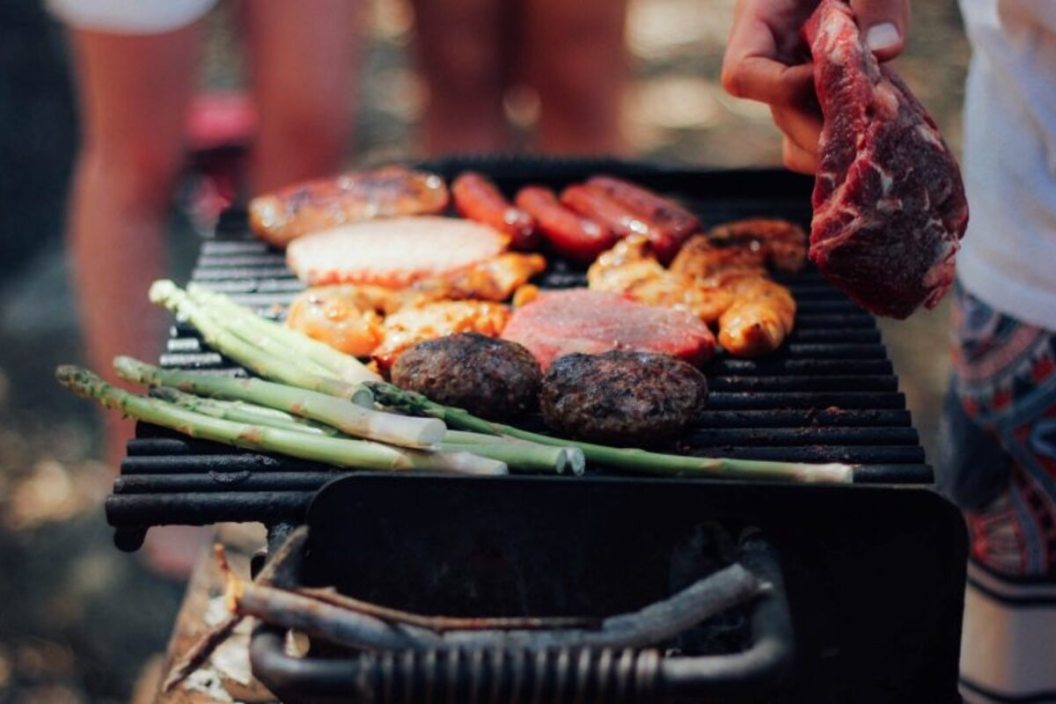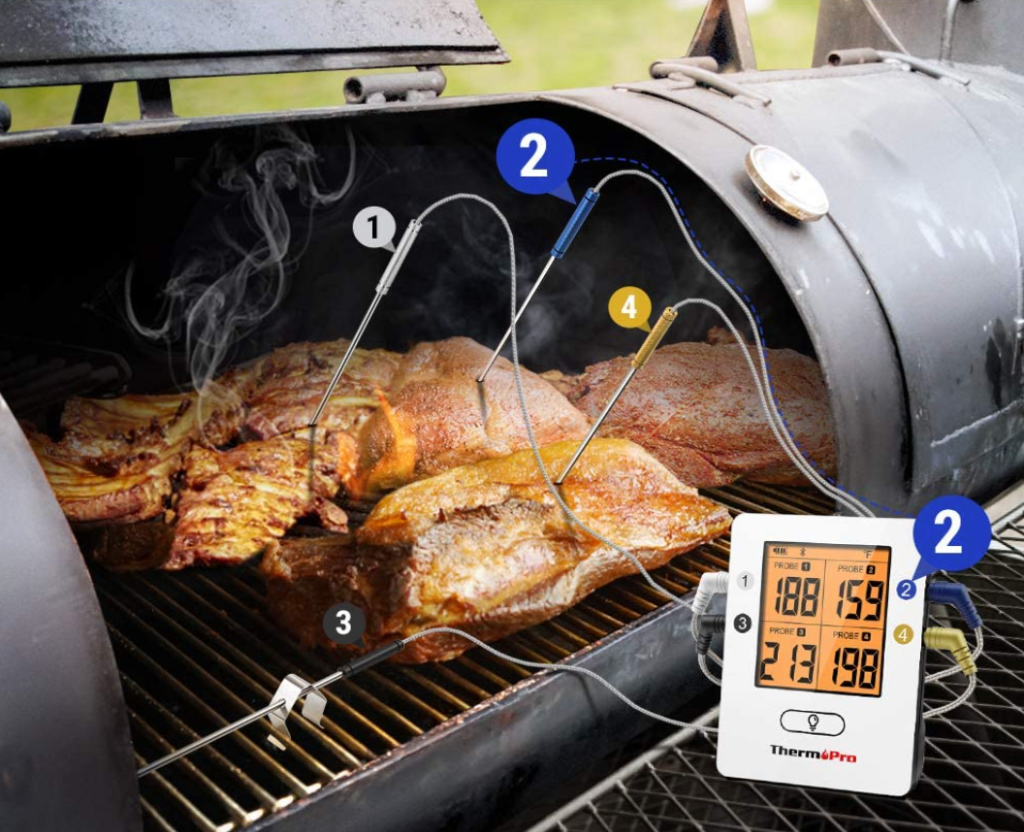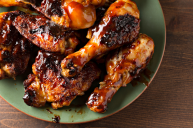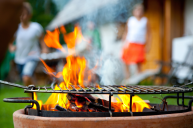It's that time of year again: it's hot outside, it's hot inside (sadly, no air conditioning for me), and slaving over the stove is only going to make it hotter. The good news is everything you cook inside can also be cooked outside on the grill.
Videos by Wide Open Country
Don't know how to grill, or don't feel confident enough to pull off anything but burgers and hot dogs? Let's break it down! You may not become a grillmaster overnight, but starting with the basics of how to make everything from flavorful grilled steak to grilled veggies is step one.
Grilling Basics
OK, let's start with the basics, the grill itself. If you're in the market for a new grill, we compared best grills of 2017 and came away with some pretty solid recommendations.
Gas Grills
Gas grills are really convenient and don't require much cleaning or maintenance. They're also the quickest way to get outside and get grilling. All you have to do is turn on the knob. The tradeoff is that they tend to be more expensive than charcoal grills, and traditionalists would say charcoal makes better food (which I disagree with).
Charcoal Grills
Charcoal grills are the most widely available type of grill and are available at all price points. They use lump charcoal or charcoal briquettes as your heat source, which imparts a deep, smokey flavor into your food.
It takes a little bit of practice to get your fire going (using either a chimney starter or lighter fluid), but you will get to know your grill in no time.
Pellet Grills
One of the most appealing traits about the pellet grill is you can use it as a smoker or as a grill. All you need to do it place the wood pellets inside the hopper box and control the heat via the electronic panel. They have a reputation for being a set-it-and-forget-it grilling method. You could use soaked wood chips and a propane or charcoal grill to get the same results, but you would have to constantly monitor the grill.
Pellet grills do require electricity to run, so make sure you have a spot with ready access to an outlet.
Direct vs. Indirect Heat
Like the oven, the temperature of your grill controls everything about how your food will cook. Do you want it to cook quickly or low-and-slow? Are you looking for a seared crust or a tender exterior? Do you want char and grill marks? The temperature of your grill controls it all.
To grill steaks, you should give them a hard sear over hot, direct heat. The food is placed directly over the hot coals or flame. For salmon and other fish, cooler, more indirect heat works best. The food is cooked on the cooler side of the grill grates without any coals or flame beneath it. This method cooks your food slower and lower than the direct method.
Some foods benefit from a combination cooking method, like chicken breasts. Start with a direct heat to get grill marks, then move it to indirect heat to finish cooking the chicken through without burning the outsides.
With gas grilling, controlling the heat zones is as easy as turning on or off the sections. Most gas grills have at least two zones, with many of the high-end grills having four temperature control knobs. On a charcoal grill, you can create multiple zones by moving around the charcoal, piling it high on one side and keeping it away from the other side. Most pellet grills do not allow for multiple heat zones.
Grilling Tips
Now that we have our grill and we know how to control the temperature, we're ready to fire it up and start cooking!
1. Have the Right Equipment
All you really need is a pair of tongs, a grill brush, and a long-handled spatula. Have a pair of hot pads close by for safety, and a squirt bottle of water to control flare-ups.
2. Get Everything Ready
https://www.instagram.com/p/BWIjmxol1YQ/
Once you start grilling, things tend to move quickly. It's best to have all of your vegetables chopped, sauces ready, and serving plates on hand.
3. Clean Your Grill
The best way to prevent your food from sticking to the grill grates is to clean the grill with every use. Once the grill is preheated, scrub the grates with your wire brush.
4. Control Your Heat
Know what kind of heat you need for each item. Steaks, shrimp, kebabs, grilled asparagus, and corn on the cob work really well with direct heat. Larger cuts of meat like roasts, whole chickens, whole fish, and ribs are best cooked with indirect heat.
5. Keep the Lid Down
If you open the lid, you let out some of the heat, cooling down the ambient temperature of your grill.
It will take longer to cook your food and could cause temperature fluctuations that can dry out your meat.
6. Be Patient
It's tempting to push down on plump, juicy burgers to make them cook faster, but you'll squeeze out all the juicy goodness! All good things take time, and a great burger is one of them.
7. Use a Meat Thermometer
Take the guesswork out of it and use an instant-read thermometer. Yes, you can do the finger test to determine doneness, but the thermometer will make you 100 percent sure you cooked the meat to the exact internal temperature you want.
8. Let it Rest
The most important thing you can do to create juicy steaks, burgers, and boneless or bone-in chicken is to let it rest. 5 minutes is enough time for most grilled food, with up to 15 minutes for large roasts or birds.
This allows the juices to redistribute within the meat instead of spilling out onto the cutting board.
9. Don't Forget About Sauces, Brines, and Marinades
From bbq sauce to chimichurri, sauces, brines and marinades have a home with grilled food. Brine chicken breasts for 30 minutes before grilling for the juiciest results, and marinate tough cuts of meat like flank steak overnight. Spice up pork chops and grilled chicken with a saucy topping.
Check out our favorite grill recipes, including my favorite grilled pizza!
Products featured on Wide Open Eats are independently selected by our editors. However, when you buy something through our links, we may earn a commission.






